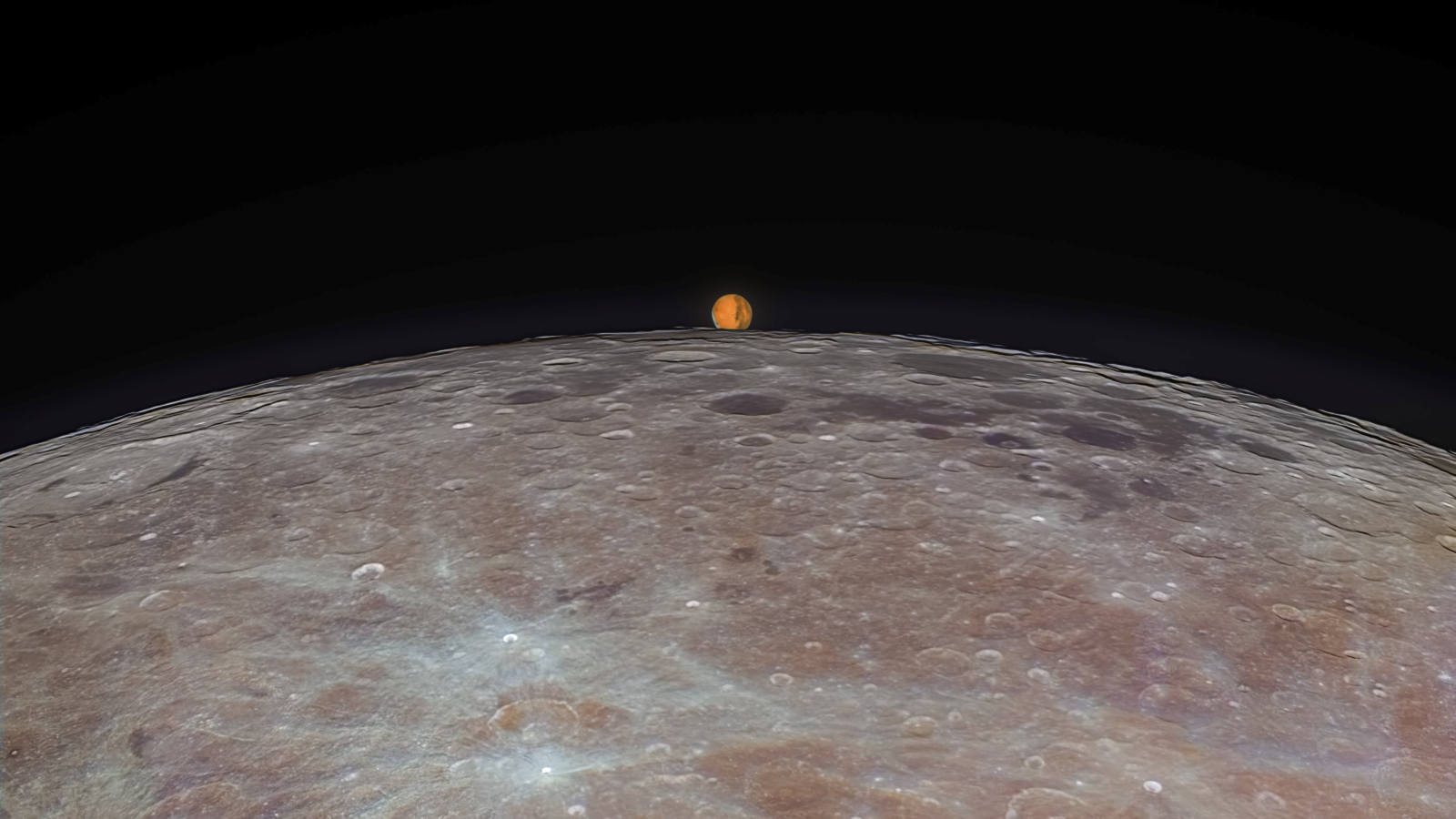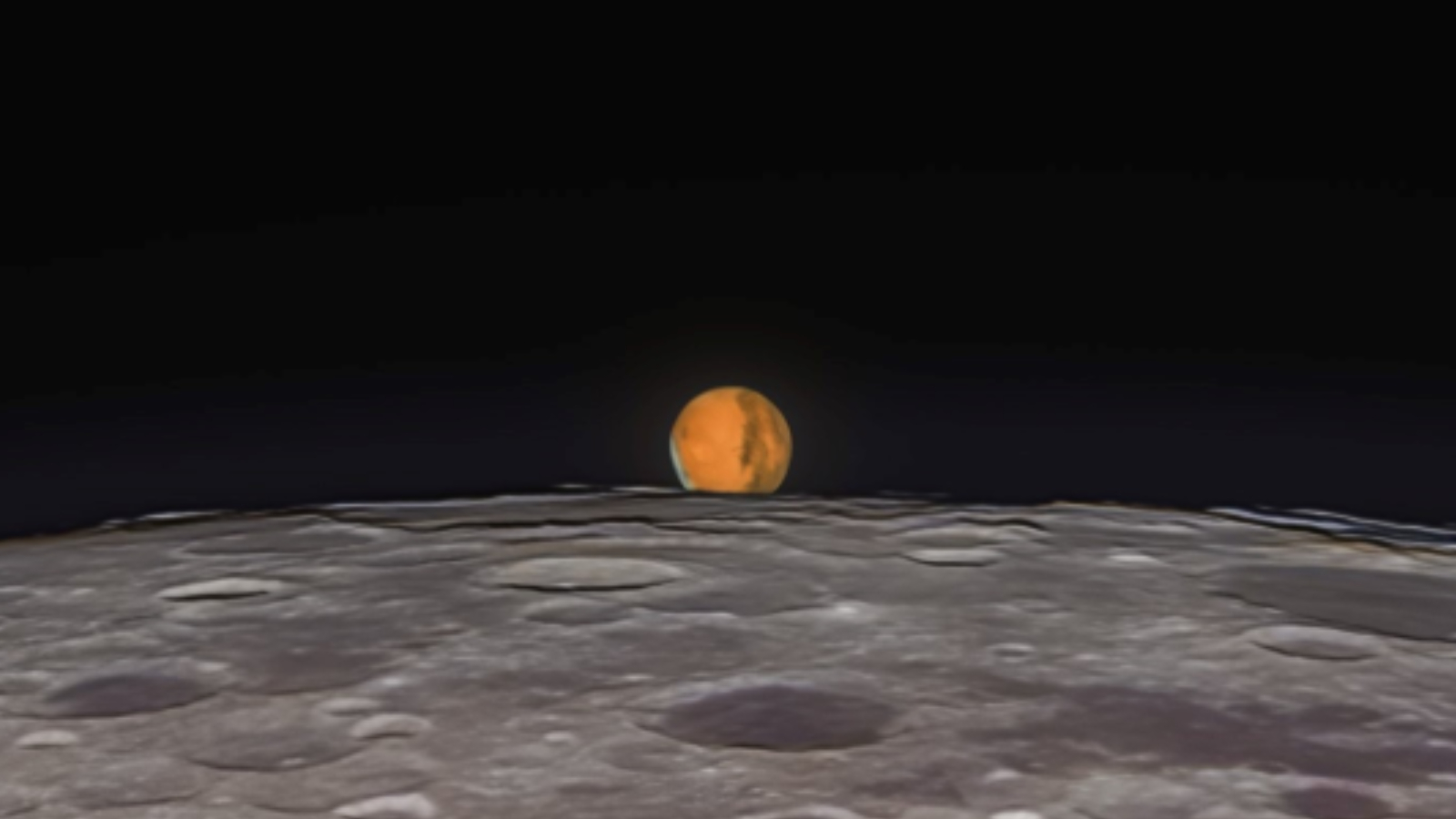See Mars 'peek out' from behind the moon in stunning eclipse photo
An astrophotographer has captured a highly detailed image of the Red Planet reappearing from behind the moon after a lunar occultation.

An awe-inspiring new image has captured the moment a tiny and unusually vibrant Mars rose from behind the moon's crater-covered surface during a recent eclipse.
The Red Planet was temporarily obscured from Earth’s view by the passing moon during an event known as a lunar occultation, which occurs roughly twice a year and lasts for around an hour. However, the Dec. 7 eclipse proved especially dramatic because Mars was at opposition, meaning Earth was directly between it and the sun, which makes the planet appear unusually bright in the night sky, according to Live Science's sister site Space.com.
The new image was captured by professional astrophotographer and Arizona resident Andrew McCarthy, who shared the stunning shot on Twitter.
"This is the moment Mars peeked out from behind our moon," McCarthy wrote. "Seeing another planet rising on the horizon of our moon was such a surreal experience."
Related: Mars may be slowly ripping its largest moon apart

Mars' unusual brightness meant that the recent eclipse was clearly visible from Earth's surface, and many people captured photographs and videos of the Red Planet disappearing or reappearing from behind the moon. However, "capturing a detailed photo of this event was a real challenge," McCarthy told Live Science.
To acquire his ultra-detailed image, McCarthy utilized an astrophotography technique known as "lucky imaging," which involves taking quick bursts of tens, hundreds or thousands of photos and stacking the best ones on top of each other to form a single, detailed image. Due to the speed the moon travels, McCarthy had a window of just 10 seconds to take his images to avoid the lunar surface becoming blurred in the final picture. During this brief window, he took around 2,000 individual images.
Sign up for the Live Science daily newsletter now
Get the world’s most fascinating discoveries delivered straight to your inbox.
"Overall it's one of the most difficult shots I've ever captured," McCarthy said. But it is also "one of my favorite moments since beginning this hobby."
On Nov. 16, the unmanned Orion capsule from NASA's Artemis I mission captured a similar image of Earth disappearing behind the lunar surface as the spacecraft flew past the moon and into orbit around the satellite.
In September, McCarthy also captured a stunning timelapse image of a 1 million-mile-long (1.6 million kilometers) plume of plasma erupting from the surface of the sun during a coronal mass ejection.

Harry is a U.K.-based senior staff writer at Live Science. He studied marine biology at the University of Exeter before training to become a journalist. He covers a wide range of topics including space exploration, planetary science, space weather, climate change, animal behavior and paleontology. His recent work on the solar maximum won "best space submission" at the 2024 Aerospace Media Awards and was shortlisted in the "top scoop" category at the NCTJ Awards for Excellence in 2023. He also writes Live Science's weekly Earth from space series.










